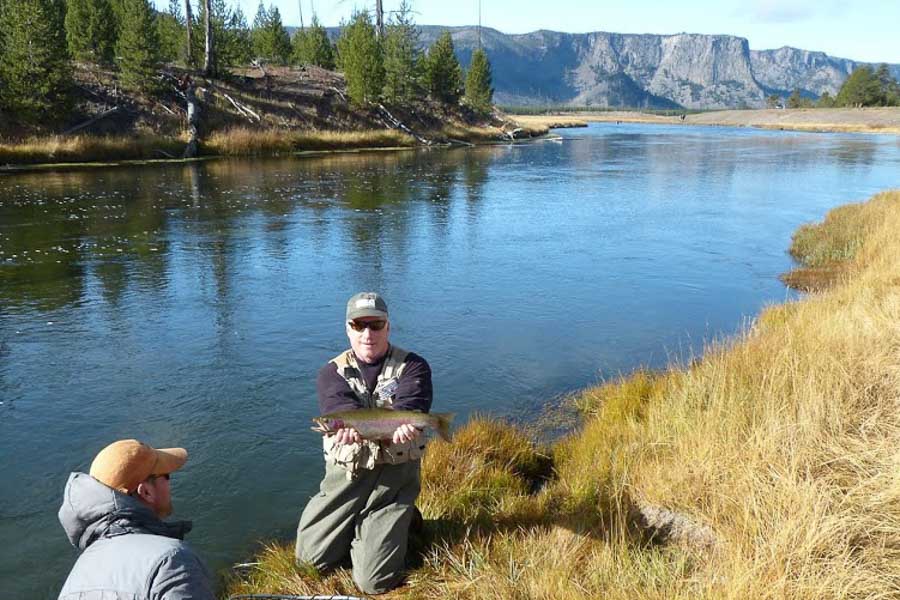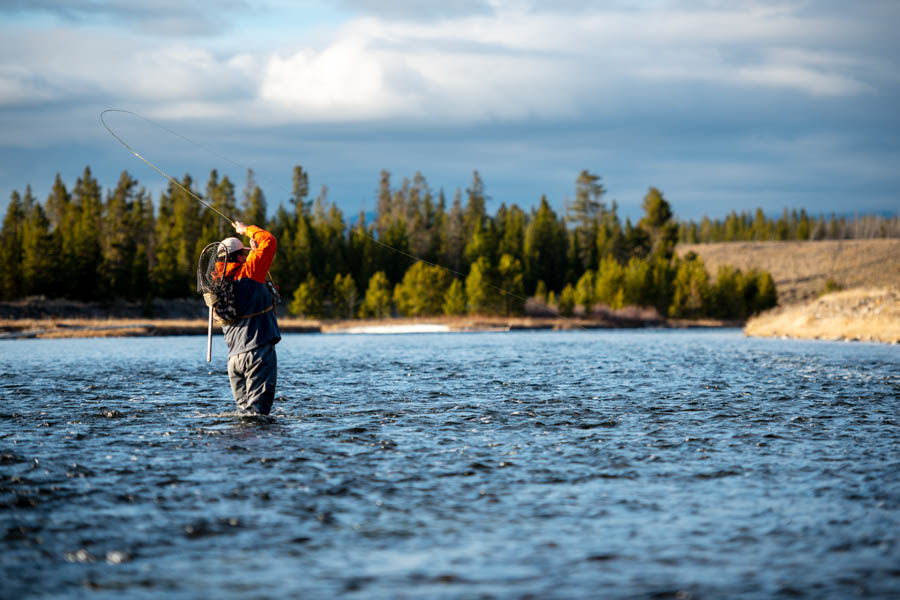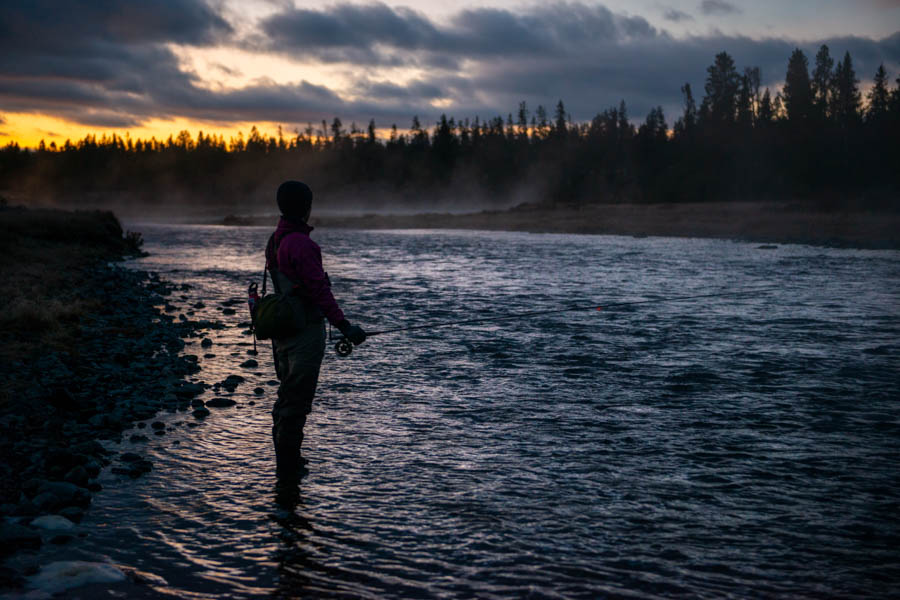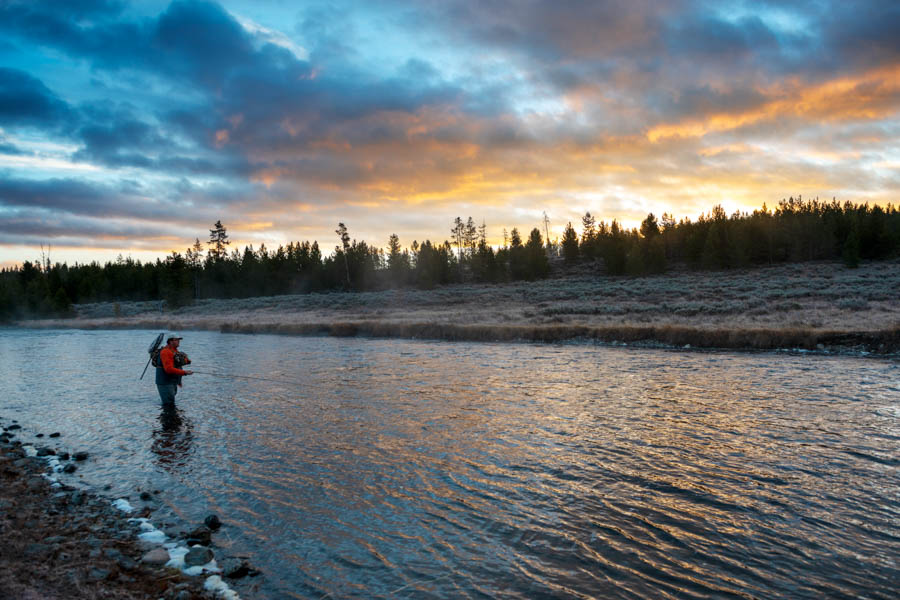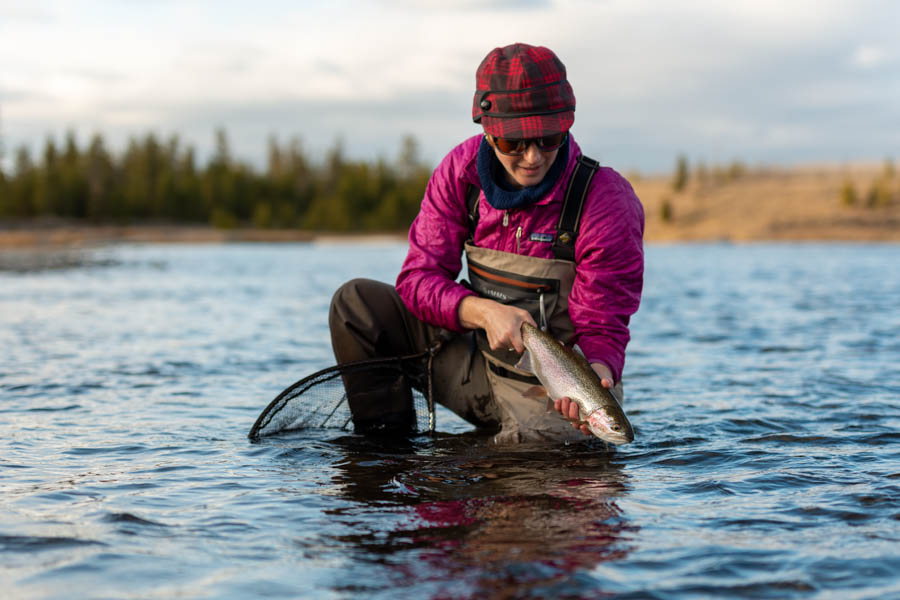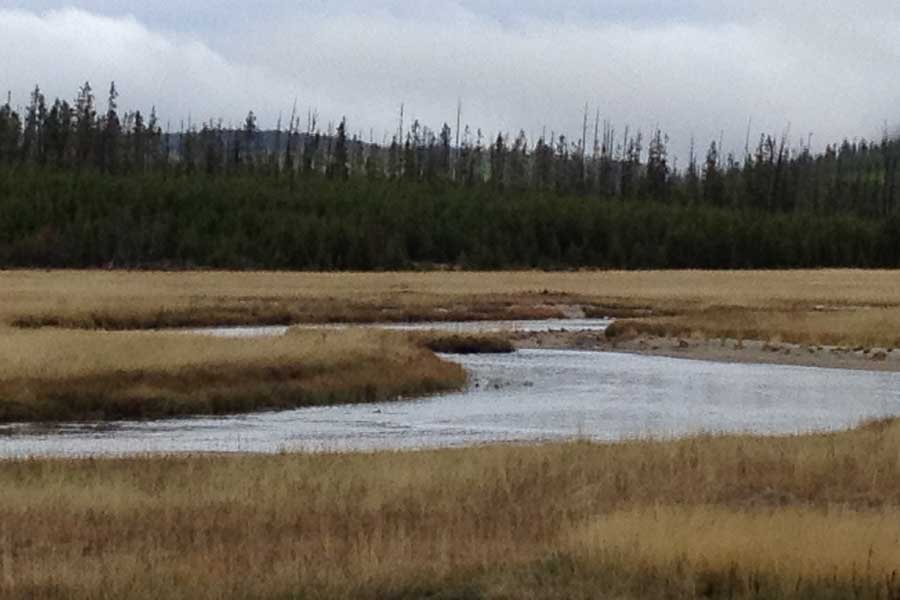One of Yellowstone Parks’ largest rivers, the Madison is viewed by millions of visitors each year as it meanders along the West Entrance Road. What you will see here is completely different than in the famous waters waters outside the park in the state of Montana. While the Montana stretch is swift, rocky, and peppered with huge boulders, the Park reach resembles a big spring creek. Aquatic grasses wave in the current and much of the riverbed is sand or small pebbles. Elk and bison are frequently spotted along the grassy banks and the river is home to one of the very few resident pairs of Trumpeter Swans in the entire park.
Fly Fishing the Madison River in Yellowstone Park - Overview
The Madison in Yellowstone Park is defined by both the origin and destination of its waters. Its origin is the Gibbon and Firehole Rivers, both heavily heated by runoff from thermal areas. This makes the Madison too warm to fish in mid-Summer. The destination is Hebgen Lake, a man-made lake that the river enters just outside of the park boundary. The Madison acts as a nursery for the lake and sees an influx of large fish each fall. The downside to this is that the resident population of fish is somewhat diminished, though they are still plentiful enough to offer good fishing at times. Both Brown and Rainbow Trout are found in the Madison, with the average resident fish running 12-15” and the average lake fish in the fall running 16-21”. Dry fly fishing is the most useful technique for the resident fish in June, with nymphs and streamers employed for the big boys in the fall. For fall fishing, consider a heavier rod than your standard 5wt trout rod. Two-handed switch and spey rods, while certainly not required, are a common sight on the river, especially for those who like to swing streamers.
Fishing the Madison River - Madison Junction to Riverside Drive
This section of river is productive in both spring and fall, as it holds both resident and migratory fish. Riverside Drive is located about 5 miles inside of the park from West Yellowstone and is adjacent to an enormous riffle where the river flows only a few inches deep. Below this point, the population of resident trout is very sparse, making it a poor choice in the spring.
This section of river becomes fishable soon after the season opens, usually during the first week of June. The fishing holds on for about a month before water temperatures become too warm. The main attraction during June are hatches of Pale Morning Duns during the day and Caddis in the evenings. For the PMD’s, be sure to carry emergers, duns, and cripples in a #16. For the caddis, carry both olive and tan patterns in #12-#16. This stretch of river sees a sporadic hatch of Salmon Flys during the middle of June. While this hatch is not very consistent, it would be a shame to watch fish gorge on huge stoneflys and miss out on the action, so be prepared just in case. If there is no hatch, nymphing likely spots with a rubber leg stonefly and PMD or Caddis dropper is your best bet.
As the river cools in September, the resident fish become active again and the migratory fish from the lake begin to push in. The number of large fish increases as the fall progresses, but so do the crowds. October is considered the best time to target these fish. Target the migratory trout by nymphing or swinging a streamer. My top choice for a nymph rig is a stonefly with a small mayfly, such as a pheasant tail, as the dropper. For a streamer, look towards steelhead patterns such as intruders for inspiration. The fly is presented by casting across the current at a slight downstream angle. The line is held tight and the fly is allowed to swing through the run. Take a step down and repeat until the entire run is covered thoroughly. Remember that these fish are accustomed to a lake environment, so seek out deeper, slower water for best results.
While these tactics will take resident trout as well, excellent hatches of Blue Winged Olives come off during fall, especially on cloudy days. This can be a nice change of pace if the migratory trout are being fickle (as migratory fish often are) or you tire of casting heavy streamer or nymph rigs. The BWO’s are usually a #18 during fall so carry a good selection of both dries and emergers.
Fishing the Madison River - Riverside Drive to Park Boundary
As discussed above, this stretch contains few resident fish so wait until fall to fish here. The good news is that trout from Hebgen Lake reach this water first, so fishing begins sooner and the fish have seen less pressure. Much of the water here is characterized by shallow riffles, so the deep holes are spread out, obvious, and well known. The most well known are the Barnes Pools, which rank among the most famous fishing holes in the entire park. Just above the Barnes lies an area known as Cable Car Run and below is the Beaver Meadows. Don’t expect solitude here. Local etiquette dictates that you fish these runs from top to bottom, allowing other anglers to work in and do the same. While this type of fishing isn’t for everyone, it is a unique experience and some awfully large trout lurk in the depths. Choose a nymph or streamer rig as discussed above but don’t be afraid to experiment with flies; these fish see plenty of them so try to think outside the box.


